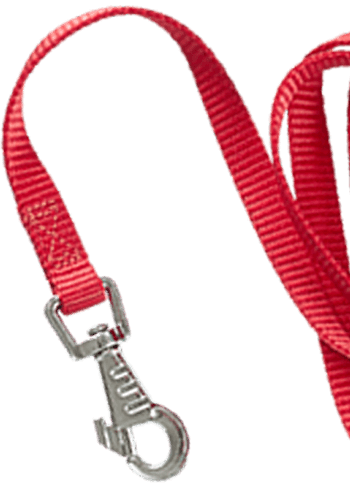


Welcoming a White Labrador or English Cream Golden Retriever puppy into your home is an exciting and rewarding experience. However, it also comes with its challenges. In this resource, we’ll explore ten essential tips to help you navigate the puppy-raising journey with confidence. From socialization and training to nutrition and healthcare, these tips will ensure that your puppy grows into a happy, healthy, and well-behaved adult dog.
Welcoming your new puppy home is an exciting and important moment for both you and your furry friend. Here’s how to properly welcome your puppy home:
Before bringing your puppy home, ensure that your house is puppy-proofed. Remove any potential hazards, such as toxic plants, electrical cords, small objects, and sharp edges. Set up a designated area for your puppy with their bed, toys, food and water bowls, and a crate or playpen.
When you arrive home with your puppy, keep introductions calm and low-key. Allow your puppy to explore their new surroundings at their own pace on leash. Avoid overwhelming them with too much attention or too many new people all at once.
Your puppy may be feeling anxious or unsure in their new surroundings. Provide comfort and reassurance by spending time with them, offering gentle pets and cuddles, and speaking to them in a soothing voice. Let them know they’re safe and loved.
Understand that it may take some time for your puppy to fully adjust to their new home. Be patient and give them the space and time they need to acclimate. Provide plenty of love, attention, and positive experiences to help them feel comfortable and secure.
Early socialization is crucial for White Labradors and English Cream Golden Retrievers to grow into well-adjusted and confident adults. Introduce your puppy to various people, animals, environments, and experiences in a positive and controlled manner. This helps prevent fearfulness later in life.
Some Ideas for Socialization:
Expose your puppy to a variety of people of different ages, genders, ethnicities, and appearances. Encourage positive interactions with strangers by rewarding calm and friendly behavior.
Allow your puppy to interact with well-behaved and vaccinated dogs in safe environments such as puppy socialization classes or supervised playdates. Monitor their interactions to ensure they are positive and appropriate.
Introduce your puppy to other animals they may encounter in their environment, such as cats, birds, or small mammals. Always supervise these interactions to ensure the safety of all animals involved.
Expose your puppy to different sounds, including traffic noises, sirens, vacuum cleaners, doorbells, and children playing. Start with low-intensity sounds and gradually increase the volume as your puppy becomes more comfortable.
Allow your puppy to walk on various surfaces such as grass, concrete, sand, gravel, wood, and carpet. This helps them become accustomed to different textures and builds confidence in navigating different environments.
Gently handle your puppy’s paws, ears, tail, and mouth to help them become comfortable with being touched and examined. This will make grooming, veterinary visits, and other forms of handling less stressful for your puppy in the future.
Take your puppy to different places such as parks, beaches, pet stores, cafes with outdoor seating, and busy streets. Exposing them to new environments helps them become adaptable and confident in different settings.
Begin training your puppy as soon as you bring them home. Focus on basic obedience commands such as sit, stay, come, and leave it. Use positive reinforcement techniques, such as treats and praise, to encourage good behavior and establish a strong bond with your puppy. If your puppy has already been through some basic obedience training you can try some trick training or some more advanced training to keep your puppy challenged mentally and physically.
Establishing a routine for your puppy is crucial as it provides structure, consistency, and predictability, which are essential for their physical and mental well-being. A routine helps puppies feel secure, reduces anxiety, and facilitates faster learning.
Examples of routines include consistent feeding times, regular potty breaks, daily walks or play sessions, and scheduled training sessions, all of which help your puppy develop good habits, bond with you, and thrive in their environment.
Example Daily Routine for a Puppy:
Consistency for a new puppy involves maintaining clear rules and boundaries in various aspects of their life, including interactions with people, behaviors at home, and outings in public settings. Here’s how consistency applies:
Consistency at home means enforcing the same rules and boundaries consistently. For example, if you’ve designated certain areas of the house as off-limits, such as bedrooms or the kitchen, ensure that everyone in the household adheres to this rule. Consistent reinforcement helps your puppy understand what behavior is expected of them and reduces confusion.
Establish consistent behavioral expectations for your puppy, such as not jumping on furniture, not begging at the table, and not chewing on household items. Enforce these expectations consistently by redirecting unwanted behaviors and rewarding desired behaviors. Consistency helps your puppy understand what is acceptable behavior and what is not.
Consistency also applies to how your puppy interacts with visitors to your home. Communicate your puppy’s rules and boundaries to guests, such as not allowing them to feed your puppy from the table or allowing jumping up for attention. Consistent reinforcement from both family members and visitors helps your puppy learn appropriate behavior in different social situations.
When out and about with your puppy, consistency is key to ensuring their safety and well-being. Maintain consistent rules and expectations for behavior in public settings, such as walking politely on a leash, not approaching strangers without permission, and following basic obedience commands. Consistently reinforcing these behaviors helps your puppy become a well-behaved and reliable companion in various environments.
Feed your White Labrador or English Cream Golden Retriever puppy a high-quality, age-appropriate diet. Consult with your veterinarian to determine the best feeding schedule and nutritional requirements for your puppy’s growth and development.
White Labrador Retrievers and English Cream Golden Retrievers are typically friendly, active, and energetic breeds that require regular exercise to stay healthy and happy. Here’s how to ensure proper exercise for a White Labrador/English Cream Golden Retriever:
Schedule regular veterinary check-ups to monitor your puppy’s health and vaccinations. Follow your veterinarian’s recommendations for parasite prevention, vaccinations, and spaying or neutering. Additionally, maintain good grooming practices, including regular baths, brushing, and nail trims.
Use crate training as a positive tool to keep your puppy safe in your absence, help with house training, and a place to go if you cannot have your eyes on them. Gradually introduce your puppy to the crate and make it a comfortable and inviting space.
Embracing the journey of puppyhood is a rollercoaster of experiences, from the joys of watching them learn new tricks to the challenges of housebreaking. Celebrate every milestone, whether it’s the first successful potty outside or mastering a command. Cherish the special moments, like cuddles on the couch or playful zoomies in the yard. Through it all, the bond you form with your puppy during this formative period will endure, evolving into a deep and lasting connection that enriches both of your lives for years to come.
Raising a White Labrador or English Cream Golden Retriever puppy is a rewarding journey that requires careful planning, patience, and commitment. By following these ten essential tips, you’ll set the stage for a happy, healthy, and well-adjusted adult dog. Enjoy every moment of puppyhood, and cherish the lifelong bond you’ll share with your furry companion.
Are you thinking about getting a White Lab puppy? Come visit Snowy Pines White Labs at our Ozark home or view our puppy live stream to see healthy dogs in action.